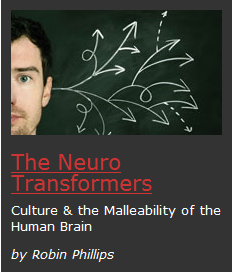
In my Salvo article ‘The Neuro Transformers’ and also in ‘Sex & the Kiddies’ I explained just how flexible the human brain is and how the messages we are exposed to in our culture actually change the neuro-circuitry of our brains.
One example of neuroplasticity is the ‘Sea Gypsies’, a maritime tribe of people living off the coast of Thailand. These people have brains that facilitate exceptionally keen underwater vision. Not only can their brains override the reflex that normally controls the shape of the pupil, enabling a Sea Gypsy to constrict his pupils by 22 percent, but they can also accurately compensate for the refraction that occurs when light passes through water. To expect a non-Sea Gypsy like myself to exhibit the same facility would be like expecting a dog to deliberately bark in F major or a pigeon to coo in D minor.
So how is it that the Sea Gypsies have this amazing ability? According to standard Darwinian theory, the explanation goes something like this: over thousands of years, our genetic makeup gradually changes to conform to the demands of our environments, leading to appropriate changes in the structure of our brains. Genes that have survival value will be perpetuated through succeeding generations, while those that do not will tend to die out.

This evolutionary narrative has recently had to be abandoned by professional neuroscientists. We now understand that these types of variations in the brains of different people groups have nothing to do with genetics at all. The physiological structure of our brains, including hundreds of thousands of neuro-connections, do evolve to adapt themselves to our natural and cultural habitats, but this evolution occurs within a single lifetime without leaving a footprint on the genetic code.
This was demonstrated through a study of brain scans done on London taxi drivers in the late 1990s. Researchers found that, in the cabbies, the posterior hippocampus, a part of the brain that stores spatial representations, was considerably larger than in non-cab drivers. Now, clearly, a London taxi-driver’s genetic make-up is not fundamentally different from a London mechanic’s or a London web designer’s, yet there are very clear structural differences in their brains.
Not only can things like memorizing and swimming underwater change our brains, but our brains also change based on the messages we receive from society all around us, and from the cultural environment in which we grow up. This can be a force for good, when the culture around us is wholesome, but it can also be a force for great evil and subversion. It is this more sinister side of neuroplasticity that I have focused on in my Salvo articles ‘The Neuro Transformers’ and also in ‘Sex & the Kiddies.’

